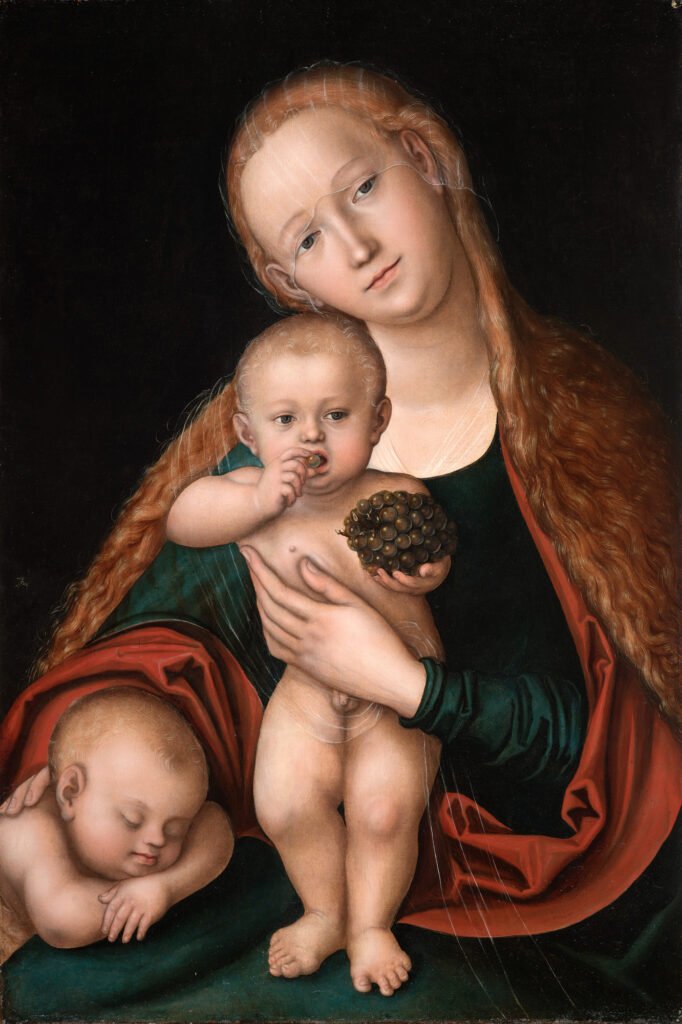Lucas CRANACH THE YOUNGER
(Wittenberg, 1515 - 1586)
Virgin and the Child with Infant St. John the Baptist sleeping
Oil on panel, 86.1 x 57 cm
Signed upper left with the artist’s device of a winged serpent
A painter and draughtsman. The author of pictures featuring religious and mythological subjects, as well as genre scenes and portraits. Following the death of his father, Lucas Cranach the Younger headed the family studio. He worked for the most part in Wittemburg and Weimar. He painted commissions from the nobility and the most elite circles in Germany of the period. From the point of view of his style and subjects, Cranach the Younger followed the main trajectories established in the art of his father. Apart from his work as an artist, Cranach the Younger was a successful entrepreneur and artist. The works of Lucas Cranach the Younger are featured in many private and museum collections around the world, including in Berlin, Munich, Dresden, Leipzig, Vienna, New York, Paris, Budapest and St. Petersburg.
This endearing depiction of the Virgin Mary and child Christ with the sleeping infant St. John the Baptist is now recognized as one of Lucas Cranach the Younger’s most outstanding paintings in private collections. This delicate scene with reference to the mystery of the Eucharist is like a celebration of familial love, and yet a dramatic image designed to evoke religious devotion in the viewer. The intimate emotion of affection, tenderness and love is emphasized by the child Christ offering the viewer a bunch of grapes from where he has picked one and brought it to his lips. As he begins to eat the fruit, his keen and omniscient, yet somewhat imploring look is directed to the viewer, reminding of the Christ’s words “this is my blood”, which he spoke at the Last Supper (Matthew 26:28).
The compositional arrangement is greatly influenced by the High Renaissance innovations of Raphael and other Italian masters, manifested particularly by the triangular structuring of the group and the manner in which the child Christ is depicted standing in his mother’s embrace instead of lying in her lap or on a cushion, which would be expected. The dark background without any landscape elements to create perspective brings the three figures closer to the viewer; they seem to be right here in the tangible world, creating compassionate intimacy that enhances the scene. The artist has managed to support the essence of the image with technical solutions which add to its suggestiveness. This kind of composition became very successful and after 1537 numerous versions of it were painted, preserving until today.
Provenance:
Art market, Paris, 1926;
Important private collection, Zürich, Switzerland
Bibliography:
Exhibition’s catalogue “Art Rules”, Tallinn, 2015
Exhibitions:
The Exhibition “Art Rules” organized by Art-Life Project in Tallinn Town Hall, 5 June 2015 – 5 October 2015, Estonia


